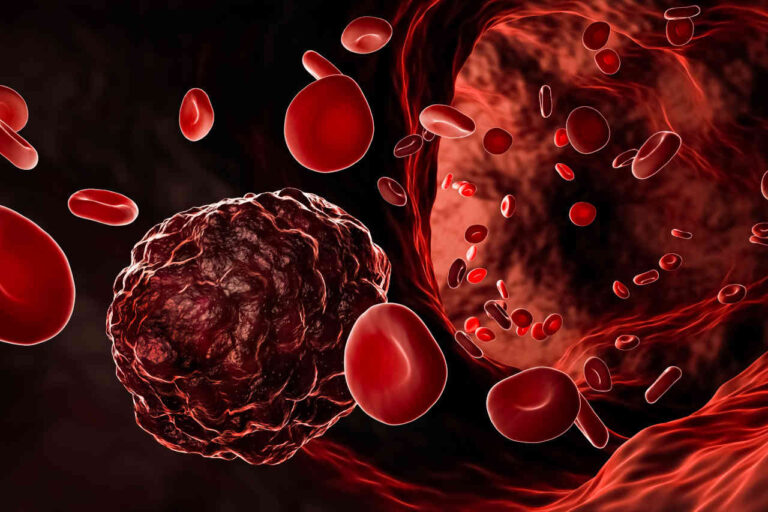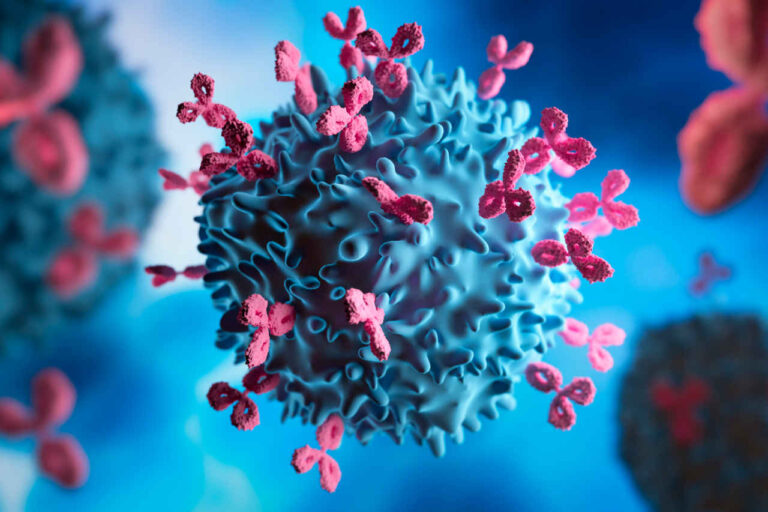
Ruxience, the brand name for rituximab, is used to treat adults with chronic lymphocytic leukemia (CLL), granulomatosis with polyangiitis (GPA) (Wegener’s granulomatosis), microscopic polyangiitis (MPA), rheumatoid arthritis (RA), and certain types of non-Hodgkin’s lymphoma (NHL).
Ruxience is a monoclonal antibody, part of a group of medications called biosimilars. It interacts with a protein called CD20 that is present in B cells, a kind of white blood cell. It is thought to either work alone to destroy cancer cells or aid the immune system in eliminating cancerous cells.
Ruxience is an intravenous (IV) formulation that is sterile, free of preservatives, clear to slightly opalescent, and colorless to pale brownish-yellow. 100 mg/10 ml or 500 mg/50 ml single-dose vials of Ruxience are both available, both with a 10 mg/ml concentration.
What Is Ruxience Used For?
- Ruxience is used in the treatment of cancers like NHL and CLL alone or in combination with other chemotherapy agents. It functions by reducing or halting the development of cancer cells.
- Ruxience is also used to treat moderate to severe RA in combination with methotrexate for those with an inadequate response to other treatment therapies. Ruxience helps reduce joint discomfort and swelling.
- Ruxience acts in MPA and GPA to prevent the action of the immune system’s components on itself. This can lessen blood vessel swelling (vasculitis) and help prevent organ damage. Ruxience is used in combination with a group of steroids called glucocorticoids for this indication.
How It Works
As a monoclonal antibody, Ruxience binds selectively to the transmembrane antigen CD20 found on mature B and pre-B lymphocytes. Once it attaches to the CD20, it is believed it will mark the cells for destruction or let the immune system know the cells can be destroyed.
Precautions Before and After Using Ruxience
Ruxience should only be used in settings with quick access to complete resuscitation resources and under the strict supervision of a qualified healthcare professional.
Before beginning each Ruxience infusion, premedication with an analgesic/antipyretic (such as acetaminophen) and an antihistamine (such as diphenhydramine) will be given to decrease the risk of a reaction from the infusion. Your first infusion may take as long as 4 to 6 hours, however, subsequent infusions should take around 3 to 4 hours.
Ruxience may interact with other medications. Hence, you should inform your doctor of all drugs or supplements you’re currently taking, whether they’re prescription, vitamins, over-the-counter, or herbal supplements.
Be sure to discuss your medical history with your doctor, as this medication can worsen certain conditions — especially if you have heart or kidney problems, a weakened immune system, or Hepatitis B virus.
Drug Dosage and Administration
Only medical professionals with the necessary resources should deliver Ruxience, and each infusion should be preceded by premedication to prevent severe infusion-related responses that could be fatal. Your doctor will do regular blood tests to look for any side effects and to see how the medication is working.
Dosing of Ruxience varies depending on the indication as well as your body surface area.
- For NHL, the recommended dose is 375 mg/m². Your doctor will provide specific instructions as to how many doses you will receive for treatment and if any other chemotherapy agents are needed.
- For CLL, a dose of 375 mg/m² will be given on the first day of the first cycle, followed by a dose of 500 mg/m² for subsequent doses. You will complete six 28-day cycles with chemotherapy medications fludarabine and cyclophosphamide.
- In RA, Ruxience is given in combination with methotrexate as two 1,000 mg infusions separated by two weeks. Subsequent courses may be needed depending on response to treatment and should be administered every 24 weeks.
- For GPA and MPA, the starting dose is 375 mg/m² once weekly for 4 weeks. For patients who have achieved disease control after the first month of treatment, your doctor may prescribe two additional doses of 500 mg/m² separated by 2 weeks, followed by a 500 mg infusion every 6 months, depending on the response to treatment.
Side Effects

People taking this medicine may experience mild or severe reactions after infusion. Hence, you shouldn’t hesitate to inform your healthcare provider of any reactions you notice during or after an infusion. Ruxience should not be used in anyone with active Hepatitis B liver disease.
The following are some of the most common side effects of Ruxience:
- Infections (especially upper respiratory infections)
- Fever
- Chills
- Weakness
- Tiredness
- Body aches
- Nausea
- Low red blood and white cell counts
- Headache
- Muscle spasms
- Swelling of extremities (edema)
Because of the quick elimination of cancer cells, Ruxience can occasionally induce tumor lysis syndrome resulting in kidney failure and abnormal heart rhythms. Notify your doctor if you begin to develop nausea, vomiting, diarrhea, or lack of energy 12 to 24 hours after an infusion.
Severe skin reactions may occur at any time during treatment with Ruxience. If you experience painful sores, rash, blisters, peeling skin, or pustules around the lips or mouth, immediately notify your healthcare provider.
Progressive Multifocal Leukoencephalopathy (PML) is a rare brain infection that can occur in patients taking Ruxience. Let your doctor know immediately if you are experiencing vision problems, loss of balance, difficulty walking or talking, or weakness on one side of the body.
You should also inform your doctor right away if you experience any of the following during or after infusion as you may be experiencing an infusion reaction:
- Hives
- Difficulty breathing
- Swelling of your face, lips, tongue, or throat
- Itching
- Dizziness
- Shortness of breath
- Chest pain or pressure
- Wheezing
- Sudden cough
- Racing heartbeats
- Redness, warmth, or swelling of the skin
Cost
Depending on the pharmacy, the wholesale cost of a dose of Ruxience is about $764 for a supply of 10 ml. The precise amount you pay for the drug is determined by several factors, including your location, and healthcare plan.












